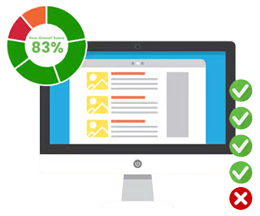The Crucial Role of Security in E-commerce Websites

Over the years e-commerce has increasingly become a cornerstone of the global economy, providing convenience and access to a wide array of products and services. However, with the rise of online shopping comes an equally significant increase in cyber threats. For e-commerce businesses, ensuring robust security isn’t just a technical necessity—it’s a vital component of maintaining customer trust and safeguarding your business.
Here’s why security is crucial for e-commerce websites and how you can implement it effectively.
1. Protecting Customer Data: The Heart of Trust
At the core of any e-commerce transaction is the exchange of sensitive information, including credit card details, personal addresses, and contact information. If customers feel their data is at risk, they will hesitate to complete transactions, leading to lost sales and damaged reputation.
Why It Matters:
- Data breaches lead to loss of trust: Once customer data is compromised, rebuilding trust can be nearly impossible. Studies show that a significant percentage of consumers will stop engaging with a business following a data breach.
- Legal ramifications: Under the Privacy Act 1988 all businesses, including e-commerce businesses, are required to take reasonable steps to protect personal information and they face severe penalties for failing to do so.
How to Enhance Data Security:
- Implement SSL certificates: Secure Sockets Layer (SSL) encrypts data transmitted between the user and the server, protecting it from interception.
- Use strong encryption methods: Ensure that sensitive data, like payment information, is always properly encrypted. Implementing a payment gateway is the best way to ensure this.
2. Preventing Fraudulent Activities
Fraud is a persistent threat in e-commerce, with cybercriminals constantly devising new ways to exploit vulnerabilities. Fraud not only leads to financial losses but also impacts the overall customer experience.
Why It Matters:
- Financial losses: E-commerce businesses often bear the cost of fraudulent transactions, especially in cases of chargebacks.
- Customer dissatisfaction: If a customer experiences fraud on your platform, they are unlikely to return, leading to lost business and potential negative reviews.
How to Prevent Fraud:
Use payment gateways with fraud detection: Choose payment processors that offer advanced fraud detection features, such as monitoring for unusual purchase patterns or verifying the authenticity of transactions.
3. Securing the Website Infrastructure
Beyond protecting customer data and preventing fraud, the security of your website’s infrastructure is crucial. A compromised website can lead to downtime, loss of sales, and further exposure to cyber threats.
Why It Matters:
- Downtime impacts revenue: Every minute your website is down, you lose potential sales. Extended downtime can also harm your search engine rankings.
- Vulnerabilities are entry points for attackers: Weaknesses in your website’s infrastructure, such as outdated software or unpatched vulnerabilities, provide easy access for cybercriminals.
How to Secure Your Website:
- Regularly update software and plugins: Ensure that your e-commerce platform, plugins, and other software are always up to date with the latest security patches. If you have someone who looks after your website for you make sure that they keep everything up to date.
- Perform regular security audits: Conduct regular assessments to identify and address potential vulnerabilities before they can be exploited.
4. Maintaining Compliance with Security Standards
Adhering to industry security standards is not just about avoiding fines; it’s also about ensuring that your e-commerce site is equipped with the best practices to safeguard against cyber threats.
Why It Matters:
- Compliance boosts customer confidence: Customers are more likely to trust and transact with a business that follows recognised security standards.
- Avoid hefty fines: Non-compliance with standards like PCI DSS (Payment Card Industry Data Security Standard) can result in significant financial penalties.
How to Maintain Compliance:
- Follow PCI DSS guidelines: If you handle credit card transactions, ensure your website complies with PCI DSS requirements.
- Educate your team: Ensure that everyone involved in managing the e-commerce site understands the importance of compliance and follows best practices.
5. Building Long-term Customer Relationships
Security isn’t just about protecting against immediate threats—it’s about building and maintaining long-term customer relationships. When customers feel safe, they are more likely to return, increasing their lifetime value to your business.
Why It Matters:
- Customer retention: Trust is a key factor in customer loyalty. A secure shopping experience encourages repeat business.
- Positive word-of-mouth: Customers who feel confident in your website’s security are more likely to recommend your business to others.
How to Foster Trust Through Security:
- Display trust badges: Displaying security seals or trust badges from reputable sources can reassure customers that their data is safe.
- Provide transparent security policies: Clearly communicate your security measures and data protection policies to customers, so they understand how their information is being safeguarded.
*****
Security is not an option for e-commerce websites—it’s a necessity. From protecting customer data and preventing fraud to securing your website infrastructure and maintaining compliance, every aspect of security contributes to building a trustworthy and successful online business. By prioritising security, you not only protect your business from potential threats but also foster customer loyalty, driving long-term growth and success. In an ever-evolving digital landscape, staying vigilant and proactive about security is the key to thriving in e-commerce.


